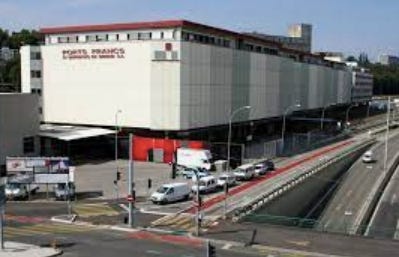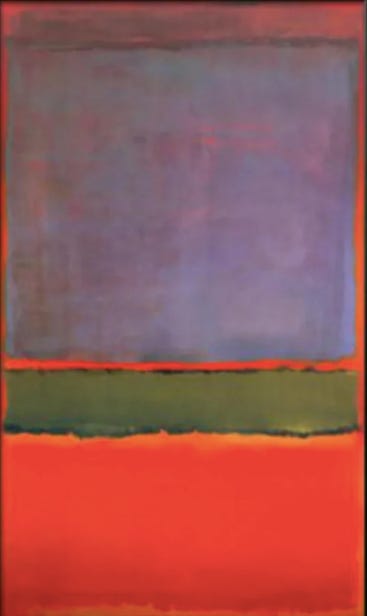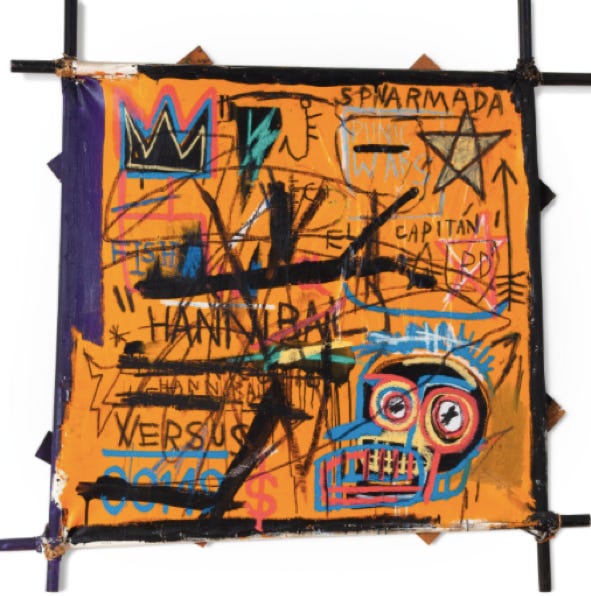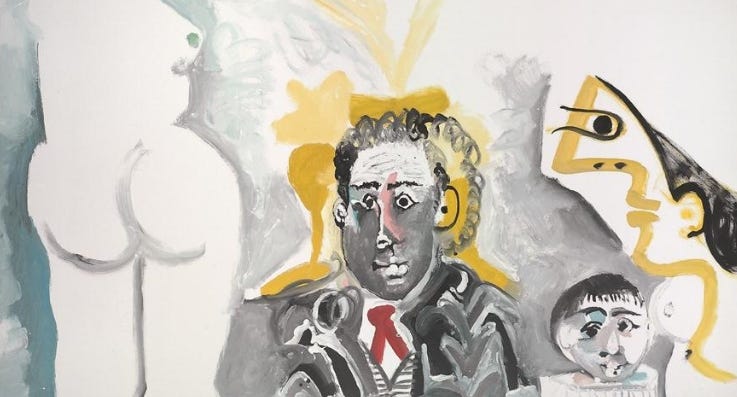Auction houses and the art market are all about secrecy even involving high-profile transactions such as the $450.3 million paid in 2017 for Salvatore Mundi by Leonardo da Vinci — the highest price ever paid for a painting. The title in Latin means Saviour of the World and depicts Jesus Christ in Renaissance garb, making the sign of the cross with his right hand while holding a transparent crystal orb representing the heavens in his left. It’s dated 1500, but that, like its provenance and past, present, and future ownership, remains shrouded. And that is why art has become a dandy way to launder dirty money and governments are about to bring down the gavel on the art world.
The da Vinci’s provenance itself is suspicious: The masterpiece disappeared for a few centuries, then was allegedly rediscovered in 2005 by a group of British art dealers who spent $10,000 and six years restoring and investigating its history. They deemed it an original and the painting was exhibited with great fanfare at the National Gallery in London in 2011 as the “Lost Leonardo”. Auctioneer Christie corroborated it was genuine, but there remained detractors who claimed Leonardo only painted part of the final version.
The buyer’s identity in 2017 was also concealed for years. Rumors were that a Middle Eastern Royal bought it on behalf of Abu Dhabi’s Department of Culture and Tourism. That was replaced by another rumor claiming that the Prince was a stand-in bidder for Saudi Crown Prince Mohammed bin Salman, infamously linked a year later to the assassination of Saudi journalist Jamal Khashoggi. Only recently, four years later, has that been “confirmed”.
I’m not suggesting that this painting was or is being used to launder ill-gotten gains. But the fact that everything about the world’s most valuable painting is cloaked in secrecy certainly illustrates why the art market has attracted criminals, terrorists, and tax evaders. Also notable is that the location of the painting — pertinent to tax and customs authorities — remains a mystery too. Some reports maintain that the painting hangs in the Crown Prince’s $590-million luxurious yacht which moves around. Alternatively, it could be secreted away in one of the non-descript storage facilities in France, Switzerland, or Singapore that contain priceless works of art, awaiting sale or hiding from the police, tax collectors, ex-wives, or art kidnappers.
These art storehouses are unattractive industrial facilities. And yet, if open to the public, would contain more treasures than all the world’s greatest galleries and museums combined. An estimate in 2013 concerning the Geneva Freeport was that as much as $100 billion worth of U.S. art alone was stashed there. That figure is vastly understated, given the role that these art warehouses play.
Each ultra-secure storage building is also a tax haven that houses everything from Picassos to gold bullion, vintage Ferraris, and fine wine. Besides being handy for those hiding stolen goods, they also provide a tax loophole — goods there are technically in transit, and therefore untaxable as long as they stay put there. And, because of anonymity, objects that remain there can trade hands and be bought and sold unbeknownst to tax authorities. This is a tax evader or criminal’s delight: Money can be made without the annoying and expensive need to smuggle works of art or precious objects across borders, and without having to pay capital gains taxes or customs duties.
Such shenanigans have alerted American and European governments who are preparing to end the art market’s secrecy, its proclivity toward dealing with unsavory clientele, and its tax avoidance measures. These measures are long overdue and only resulted, in part, due to publicity following a high-profile legal and litigation battle known as the “Bouvier Affair”. Russian oligarch, Dmitry Rybolovlev claims he was defrauded by a Swiss shipper and art dealer Yves Bouvier who is involved with the tax-free storage business.
The tale garnered headlines because the Russian alleges he bought 38 famous artworks for $2 billion from Bouvier (including the world’s sixth most valuable painting simply named No. 6 by Mark Rothko for $186 million) and was tricked into overpaying by $1 billion for the lot. Rybolovlev has spent a fortune amassing one of the world’s greatest collections of masterworks by Paul Gauguin, Auguste Rodin, Amedeo Modigliani, Pablo Picasso, Henri Matisse, and Gustav Klimt, among others. And, understandably upset, he has also spared no expense hiring lawyers to sue and get prosecutors to open investigations into Bouvier in several countries. The art dealer says he’s innocent and has won and lost several legal skirmishes over this matter. It continues.
Then there is another high-profile case in France that involves an art world dynasty. In January 2021, France’s highest court ordered a new trial for members of the art-dealing Wildenstein family, alleging they were involved in a scheme to hide hundreds of millions from tax authorities by stashing away invaluable pieces of art. In 2011, authorities said they raided a vault at the Wildenstein Institute and found 30 works of art that had been reported stolen or lost.
Other money laundering cases made the news such as one that occurred in 2015, involving a painting by Jean-Michel Basquiat called Hannibal. A former Brazilian banker, who was convicted of money laundering and other offenses, had converted his proceeds of crime into a significant art collection. The Basquiat painting, valued at $8 million, was smuggled from Brazil via the Netherlands to the United States with documents claiming it was worth only $100. It was seized and eventually sold in 2016 for $16 million.
Another notorious case involved money laundering by stock fraudsters. In 2017, prominent British art dealer Matthew Green fell in with an offshore stock fraud gang and agreed to help them launder their proceeds, according to prosecutors. The scheme was simple: Green took $9 million from them as payment for a 1965 Picasso called Personnages then “sold” it back to them immediately with their money, minus a fee of 5 percent. He was indicted for attempted money laundering.
These and other high-profile cases are why the US and Europe are finally taking action. In December, the annual National Defense Authorization Act (NDAA) was passed by Congress and the President and contains anti-money laundering provisions that will include galleries, auctioneers, dealers, and anyone involved in peddling artworks. The U.S. Treasury Department’s Financial Crimes Enforcement Network (FinCEN) will extend the Bank Secrecy Act to make art or antiquity dealers responsible for reporting suspicious clients, questionable works of art, and suspicious transactions. “You have to know who is buying and selling,” said a government spokesman. “The argument that you have no obligation to report suspicious activity because you are in the private sector doesn’t work. Banks lost that argument 30 years ago.”
These new provisions, once enacted, will also allocate huge rewards for whistleblowers. Guesses are that it may take another year for the U.S. rules to become law, but the art world won’t know what hit them when they do. Price inflation in art objects will halt because crime mostly drives up art values. For example, Mexico cracked down in 2010 on art and money laundering by passing a law requiring full disclosure of the identities of buyers, sellers, and of any cash payments. Sales immediately collapsed by 70 percent along with prices. The reason? Mexico’s cartels had been the biggest buyers of Mexican art. Unfortunately, Mexico’s museums and its richest citizens took the hit.
"Secrecy, anonymity, and a lack of regulation create an environment ripe for laundering money and evading [taxes] and [terrorist] sanctions," concluded a report released in July 2020 by a bipartisan U.S. Senate Subcommittee. "Given the intrinsic secrecy of the art industry, it is clear that change is needed in this multi-billion-dollar industry."
My newsletters will arrive in your inbox Monday and Thursday mornings, sometimes more often.








There are other cases where, like in France, where the State declares its interest in an item to be sold meaning that they will pre-empt the sale. The result is the work is sold to the state for a knockdown price effectively robbing the owner of the value of the possession as nobody else bids!
Art: something else that should be taxed every time it moves. Like investments or purchases or bill payments, every legal transaction should be taxed, both ways, at the same rate. For everybody, every time. Illegal transactions get a 200 percent tax applied.
Stop the crap and pay down the national debt (taxed).